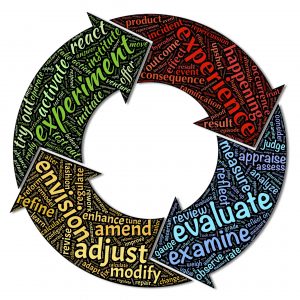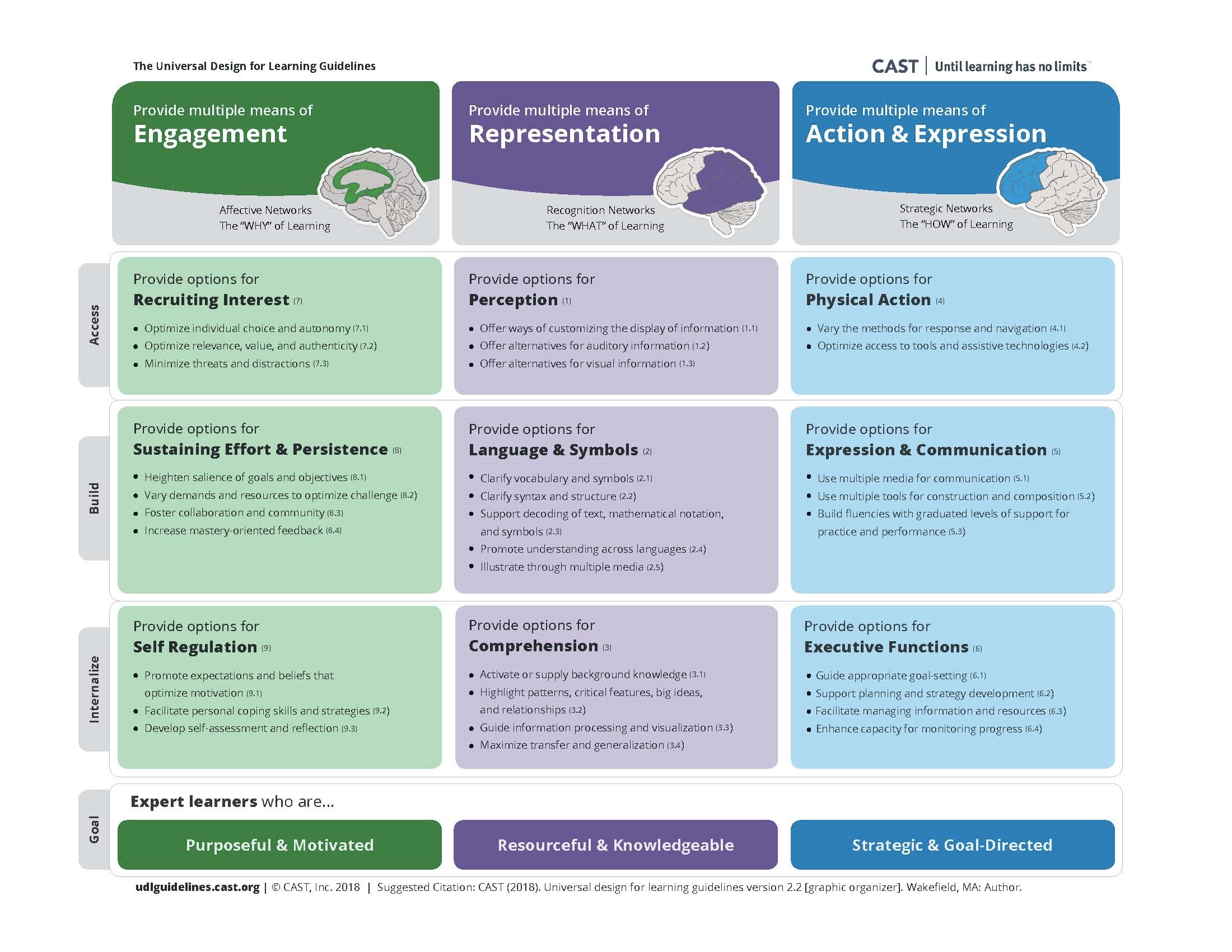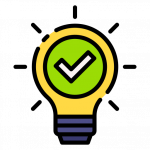2 UDL and ELLs
 Reflect
Reflect
Individually or in groups, share your responses to the reflective questions focused on accommodations you have made in your teaching practice.
We don’t learn from experiences; we learn from reflecting on experience. – John Dewey

- What type of accommodations have you been asked to provide in your courses?
- What accommodations have you been asked to accommodate for ELL students in your courses?
- What do you do specifically to support diverse learners in your courses?
- What aspect of your course do ELLs find the most challenging?
UDL and Higher Education
 View & Share
View & Share
Universal Design for Learning (UDL) Principles

Following Universal Design for Learning (UDL) principles makes learning accessible and inclusive. There are three main principles in the UDL Framework providing multiple means of: 1) engagement, 2) representation, and 3) action and expression.
Why Embrace UDL in Your Teaching Practice?
Providing equal access for people with disabilities and diverse learning needs involves eliminating barriers in your environment. Colleges and universities are required by law to make their facilities and programs accessible to qualified students with disabilities. Universal Design for Learners (UDL) is a proactive approach to making learning materials accessible to all members of the academic community.
Visit the National Centre on Universal Design for Learning website to learn more about UDL principles and to see a wide range of resources and examples.
The Universal Design for Learning Guidelines
The nonprofit education and research and development organization CAST has created guidelines to make learning more inclusive.

 Evaluate
Evaluate
There are practices you are currently incorporating into your teaching that support diverse learners. Complete the following quizzes to identify the best practices you are already doing and areas for further development.
The following checklists of activities focus on each of the three principles. The score you receive represents a snapshot of your implementation of UDL principles in your current teaching practice and related ELL supports you are already providing.
Multiple Means of Engagement

The first self-evaluation quiz will ask questions related to the following aspects related to the “Why” of Learning.
- Recruiting interest: Have you optimized your students’ interest and autonomy through inclusion of learning tasks that are relevant, authentic and valued?
- Sustaining effort and persistence: Have you included expectations for goal-setting and collaboration?
- Self-regulation: Have you helped students develop self-regulating skills and the expectation to self-reflect?
 Make Connections
Make Connections
Review the flip cards to develop an understanding of how specific means of engagement are very beneficial for ELLs
Multiple Means of Representation

The second checklist will ask questions related to providing multiple means of representation related to the “What” of Learning.
- Perception: Have you designed your course materials so students can customize them? Have you included alternative formats for text and videos?
- Language and symbols: Are your materials accessible? Have you clarified vocabulary, explaining texts, symbols, translations, and avoiding jargon?
- Comprehension: Have you activated your students’ prior knowledge and helped them connect their learning to new contexts?
 Make Connections
Make Connections
Review the flip cards to develop an understanding of how specific means of representation are very beneficial for ELLs
Multiple Means of Action and Expression

The third checklist will ask questions related to the following aspects related to the related to the “How” of Learning.
- Physical action: Have you varied the actions required for learning and provided access to assistive technologies?
- Expression and communication: Have you provided multiple formats and tools for your students to learn through? Have you provided opportunities for practice and performance?
- Executive functions: Have you supported the development of your students’ executive functioning skills; specifically, setting, planning for, monitoring progress toward, and modifying approaches to long-term goals?
 Key Takeaway
Key Takeaway
Including multiple means of engagement, representation and action and expression makes learning accessible for all learners. When you include these practices in your development and teaching, you are specifically supporting the ELLs in your classroom.
 Make Connections
Make Connections
Review the flip cards to develop an understanding of how specific means of representation are very beneficial for ELLs
 Apply
Apply
- Identify one thing you could easily change in your course materials that would significantly support ELLs in your course.
- Identify the most challenging texts in your course which would benefit from guided reading notes, and an organizer or graphic organizer.
- Identify one topic that you teach where you could easily find/add resources that reflect the diversity of your students.
